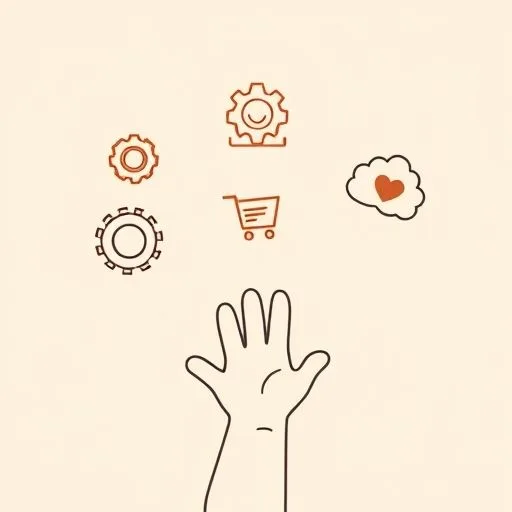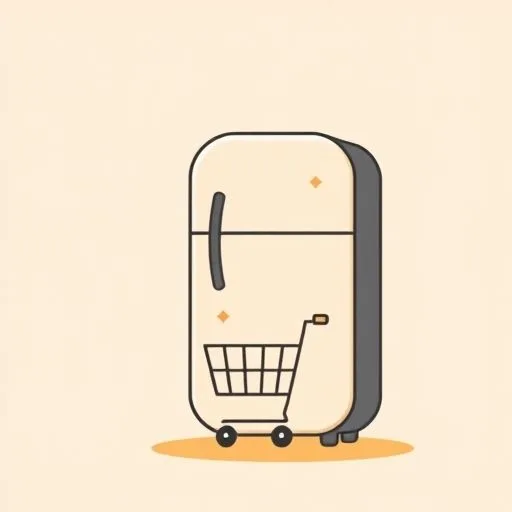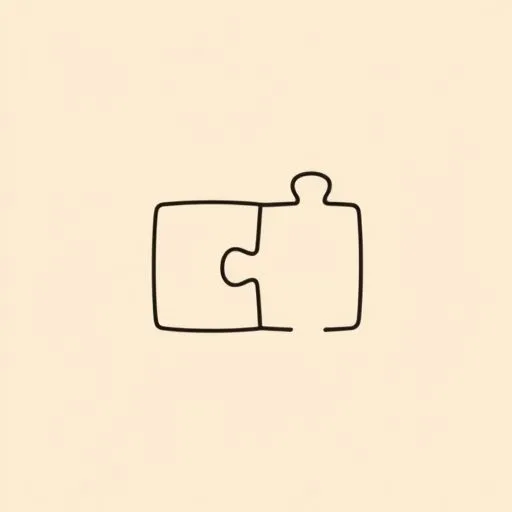
You know that thrilling moment when you’re scrolling through AI news—and suddenly it hits you?! This isn’t just about companies anymore. It’s about the world our kids will inherit. When I read about Gartner’s prediction that machines will handle 25% of purchases by 2030, my first thought wasn’t about business strategy… it was about my daughter’s future. What does it mean when algorithms make decisions instead of people? And how do we prepare our children for a world where machines aren’t just tools—they’re customers? Let’s explore this together, not as tech experts, but as parents who care deeply about the humans behind all this innovation.
The Quiet Revolution Already Happening: How Machine Customers Are Shaping Our World

Think about your smart fridge that orders milk when you’re running low. Or that subscription service that automatically sends pet food every month. These aren’t futuristic concepts—they’re already here, making decisions on our behalf. Gartner estimates there are already three billion connected machines capable of acting as customers, and that number’s projected to reach eight billion by 2030!
But here’s what really makes me pause: these machines make decisions differently than we do. They’re logical, rule-based, and can process enormous amounts of information instantly. While we might choose a product because it reminds us of childhood memories or because the packaging makes us smile, machines optimize for efficiency and data patterns.
That difference matters—because it’s shaping the world our children will navigate as adults. As machine customers become more prevalent, understanding this shift is key to future-proof parenting.
Why This Isn’t Just Business News—It’s Parenting News: Nurturing Human Skills

When I watch my daughter carefully choose which colored marker to use for her drawing—that purple pick made me smile, she told me it looked like the Toronto skyline at dusk!—I see something no machine can replicate: that beautiful human mix of emotion, creativity, and personal connection. She might pick the purple marker because it’s her friend’s favorite color, or the green one because it reminds her of the park we visited yesterday.
This is where our role as parents becomes crucial. As machines handle more transactional decisions, the human skills we need to nurture become even more valuable. Critical thinking, empathy, creativity—these aren’t just nice-to-have qualities. They’re becoming the irreplaceable human advantages in a world of automated decision-making.
Imagine your child growing up in a world where routine purchases are handled by algorithms. Their superpower won’t be memorizing product specifications—it’ll be understanding human needs, building genuine connections, and creating solutions that machines would never conceive. Preparing kids for this future means focusing on these essential human skills.
Practical Ways to Future-Proof Our Kids Today: Balancing Tech and Humanity

So how do we prepare our children for this evolving landscape? It starts with embracing both the technological and the human sides of their development.
First, let’s make technology literacy a natural part of childhood. When my daughter asks why the tablet knows what videos she might like, we talk about algorithms—not in technical terms, but as ‘helpful helpers that learn what we enjoy.’ It’s about demystifying technology while maintaining that sense of wonder. Like when we mix gochujang into mac ‘n’ cheese—unexpected, fun, and a reminder that blending old and new can spark big ideas.
Second, and this is the most important part: double down on human skills. Encourage questions that start with ‘Why do you think…?’ instead of ‘What’s the answer?’ Celebrate creative solutions that break from convention. Value emotional intelligence as much as academic achievement.
I’ve found that the best conversations happen during simple activities—baking together, walking to the playground, or even sorting laundry. These everyday moments become opportunities to discuss decision-making, problem-solving, and why we make the choices we do. These practical parenting strategies help build resilience and adaptability for the age of machine customers.
The Beautiful Balance: Technology and Humanity in Our Children’s Future

Here’s the most exciting part: we don’t have to choose between embracing technology and preserving humanity. The future needs both—machines handling routine tasks so humans can focus on what we do best: connecting, creating, and caring.
Think of it like this: machines might optimize supply chains, but they’ll never understand the joy of surprising a loved one with their favorite snack. Algorithms might analyze market trends, but they can’t appreciate the craftsmanship in a handmade toy.
Our children will navigate a world where human judgment complements machine efficiency.
They’ll need to understand technology while retaining their human touch—the ability to read a room, to comfort a friend, to innovate from the heart rather than just from data.
That’s the future we’re preparing them for: not a competition between humans and machines, but a collaboration where each brings their unique strengths. This human-machine balance is what will define their success.
Your Next Small Step as a Parent: Embracing the Machine Customer Future

You might be wondering where to start amidst all this big-picture thinking. Here’s my suggestion: treat every smart device like legs on our next family trip—let your kid be the co-pilot, asking ‘What’s this gizmo learning about us as we adventure together?’
These small moments of reflection build technological awareness while reinforcing human values. They help children see technology as a tool that serves people—not the other way around.
The machines-are-customers trend isn’t something to fear. It’s an invitation to focus on what makes us uniquely human. And that’s the greatest gift we can give our children: the confidence to thrive in a changing world, armed with both technological understanding and irreplaceable human qualities.
Because at the end of the day, no algorithm can replace the warmth of a parent’s guidance, the spark of a child’s creativity, or the beautiful unpredictability of human connection. And that’s something worth building our future on. Preparing our kids for the age of machine customers means nurturing these irreplaceable human traits.
Source: 4 ways machines will automate your business – and it’s no hype, says Gartner, Zdnet, 2025/09/11 15:08:45
